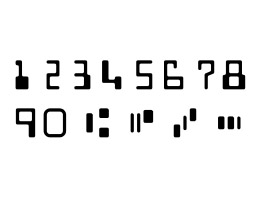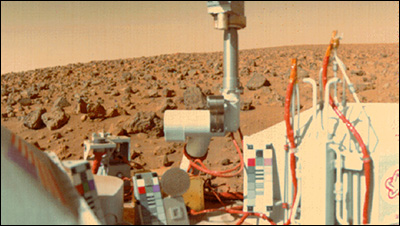 This photo from NASA’s Viking 2 lander was almost certainly transferred from magnetic reels to a finished photo using a Model 505 data reconstruction camera. This photo from NASA’s Viking 2 lander was almost certainly transferred from magnetic reels to a finished photo using a Model 505 data reconstruction camera.(Photo: nasa.gov) |
Before there were check scanners, Digital Check made a lot of other things under several different company names, mostly related to precision high-performance cameras and film projectors. One of our more interesting projects was the EOM Model 505, a special purpose camera built for NASA’s Mariner and Viking space programs.
No, this camera didn’t actually fly into space on the probes, though some of our more enthusiastic salespeople were known to say that Digital Check was the only scanner manufacturer to build a camera that left the Solar System. Instead, the Model 505 camera was used at the Jet Propulsion Laboratory in Pasadena to create images from data that the spacecraft sent back.
Back in those days (Mariner 9, the original mission that used the Model 505, launched in 1971), you couldn’t simply save an incoming photo to your hard drive as a .JPG file, or take a screenshot. The data from each photo arrived in binary format, and was saved on reels of magnetic tape. To turn it into an image that people could actually use, first it had to be transferred to film. A computer turned the data bits into an image that was displayed on a vector-scan CRT monitor, and then a high-precision camera took a picture of the monitor. Basically, this was a fancy analog version of a screencap. It would be primitive by today’s standards, but if you had a high enough quality camera, and a foolproof way of keeping both camera and monitor precisely aligned, you could capture a high-resolution image. There were still some obstacles to overcome with color and wide-angle shots, as we’ll see below.
It’s interesting to note that the idea for this technology came from the much more boring world of corporate finance and record-keeping, and the NASA camera was essentially a turbocharged version of the era’s general-purpose microfilm archiving cameras. Companies would have reels and reels of magnetic tape full of financial records, reports, mechanical blueprints, you name it – and the most effective way to create a long-term archival backup was on microfilm. So page after page of the magnetic-tape data would be flashed on a raster-scan CRT and captured by a microfilm camera in rapid succession. Cameras like this are also where most of the country’s archives of newspapers on microfilm came from.
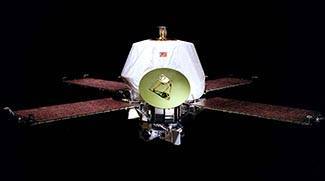 The Mariner 9 space probe gave us the first high-quality maps of Mars, and although inoperational, is still in orbit around the Red Planet today. The Mariner 9 space probe gave us the first high-quality maps of Mars, and although inoperational, is still in orbit around the Red Planet today.(Photo: nasa.gov) |
The majority of those cameras were industrial-purpose machines that captured to standard 16mm and 35mm film. But the NASA missions needed a much higher-quality image, and so the Model 505 used 127mm film – that’s exactly five inches wide.
Capturing the Mariner and Viking images also required a great deal more precision than standard data did. Our general-purpose computer output microfilm cameras were accurate to within +/- 0.001 inches, or one thousandth of an inch, which was no easy feat. For NASA’s project, the requirement was +/- 0.0004 inches (four ten-thousandths of an inch), more than twice as accurate.
The reason for this was because images often arrived in more than one “piece,” and required multiple exposures to capture correctly. For example, multiple-color photos would arrive in separate red, green and blue channels, which were displayed on the screen one at a time. If the film frames did not repeat in exactly the same position each time, the image would be blurred and unusable.
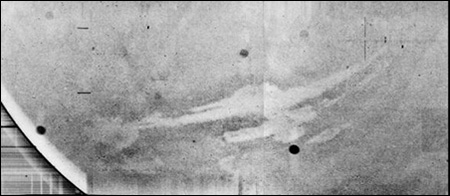
A similar issue was in play with the probes’ high-resolution or wide-angle shots, which were images bigger than the maximum resolution of the CRT screens used in the capture process. Those photos would be displayed in pieces and captured one screen-sized chunk at a time. Later, the individual pieces would be stitched back together into a full-sized mosaic image. In order for this process to work, each frame had to be captured with pixel-level precision, in order to avoid “losing” pixels from the edges, or having visible seams from overlap where one captured screen met another. Some amount of seams were still inevitable as a result of the process, but the high precision used for projects like these kept their prominence to a minimum.
An additional NASA requirement was that the film be held flat against the camera glass within a 0.001 inch margin. For the Model 505, we added an extra mechanism to solve that challenge in a unique way. If you look closely at the photo at right, you’ll notice a small silver tube sticking out the side of the camera near the bottom. This was a port for attaching a vacuum line, which was used to suck air out of tiny grooves cut in the metal platen, thereby pulling the film flat against the precision surface during the exposure time. (The physics sticklers among you may argue that the air wasn’t sucked out; it was blown out, a point which we’re willing to concede.)
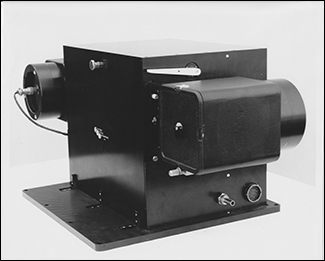 The EOM Model 505 computer output camera was used to make images from the data sent back by the Mariner and Viking probes and stored on magnetic tape reels. The EOM Model 505 computer output camera was used to make images from the data sent back by the Mariner and Viking probes and stored on magnetic tape reels.(Photo: Phil Barboni/Digital Check) |
Under the EOM name, Digital Check made a total of 10 cameras for NASA, of which eight were used and two kept as backups. Thanks to better optics and a lower orbit height, Mariner 9 was able to achieve an image resolution almost 10 times better than previous missions had – 320 feet per pixel, compared with 2,600 feet per pixel for Mariner 6 and Mariner 7. Overall, Mariner 9 returned 7,329 photos of Mars and created the first detailed surface maps; Mariner 10 took over 2,800 images of Mercury and many more of Venus. The Viking missions sent back further tens of thousands of pictures, including the first-ever color photograph taken on Mars. Mariner 9, as well as both Viking orbiters, are still in orbit around the Red Planet, with Viking 1 projected to fall out of orbit and crash sometime after 2019; Mariner 9 is expected to fall back into Mars’ atmosphere around 2022. Mariner 10 is in its own orbit around the Sun, and despite decades of inoperation, is expected to remain there forever.

